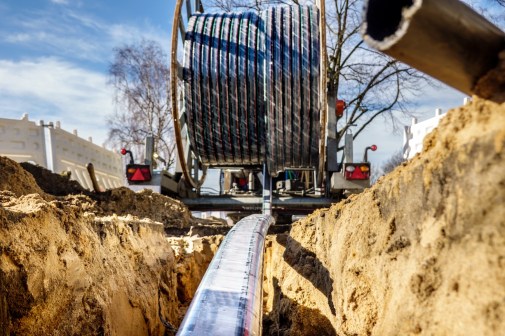Conflicting federal policies threaten future of broadband competition, paper finds

A paper published this week by the International Center for Law and Economics found that some federal broadband competition policies may be working against each other and confusing those working in telecommunications.
Eric Fruits, a senior scholar at the International Center for Law and Economics and co-author of the paper, told StateScoop that since 2021, more households have connected to the internet than ever before, while broadband speeds have increased and service prices have fallen, he said.
“A lot has changed even in the past few years,” Fruits said. “We’ve had some pretty big broadband investments and that’s led to increases in speed. It’s just been a fairly steady march over the past decade or more of increasing speed, increasing usage.”
The paper also found that more households can buy internet service from multiple providers, compared to 2021, but those options are more scarce in rural communities, he said.
“I think the U.S. is in a really fortunate position right now,” Fruits said. “Our concern that we kind of expressed in this paper is that there’s some potential headwinds in the form of regulation that could stifle some of that competition.”
Huge federal investments that seek to close the digital divide and satellite internet services through Starlink and Amazon’s forthcoming Project Kuiper have helped generate a more competitive environment, Fruits said. But, he said, the reemergence of net neutrality laws, the end of the Affordable Connectivity Program and the tight timelines and rules associated with the $45 billion Broadband Equity, Access and Deployment program could undermine competitiveness in the broadband market.
“To what extent do you really need to have really heavy handed regulation to regulate, in many ways, a very competitive market? You would see that sort of regulation in a market where you have monopoly providers or a really big market power who can exploit consumers,” Fruits said. “But those days are over because there’s so much competition if any single provider in most places in the country tries to exploit consumers, those consumers have a lot of alternatives that they can go to.”
The Federal Communications Commission’s Affordable Connectivity Program ran out of funding for the popular pandemic-era internet subsidy program at the end of May after Congress was unable to extend its funding. Fruits said he anticipates some indirect influence in that some internet service providers may not find it financially viable to deploy connections to certain areas due to low demand.
“The way I think about it is you’ve got the ACP, which is kind of designed to boost demand for broadband, and BEAD, which is designed to increase the supply of broadband, you should see broadband investment increase,” Fruits said. “I think that if you keep those programs in place you may actually see an increase in competition.”
On the other hand, Fruits said, recent policy changes could hinder competitiveness in the broadband market, including the FCC’s digital discrimination regulations and its decision to restore net neutrality rules under Title II of the Communications Act of 1934, which allows the commission to apply cybersecurity standards and requires ISPs to notify consumers of outages.
“So put together, I don’t know what’s going to happen,” he said. “Which one’s going to tip the scales more one way or the other? I don’t know.”






